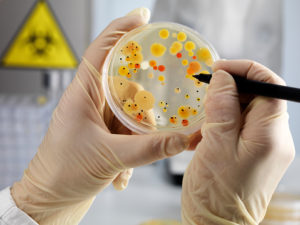Life-threatening septic transfusion reactions (STR) can occur when blood components are contaminated with bacteria. Definitive diagnosis of STR, however, may be difficult due to a myriad of factors. In order to gain a better understanding of the current criteria hospitals use in order to diagnosis STRs, the Biomedical Excellence for Safer Transfusion (BEST) Collaborative, retrospectively analyzed data from 20 U.S. hospitals encompassing 779,143 transfusions. There were 3,187 reported transfusion reactions (0.4%) of which 1,104 components were cultured (0.1%). Bacteria were detected in 3.2% (35/1,104) of the cultured components, but only 36% (394/1104) of the patients were concurrently cultured. Of the 35 positive cultured components, just one (2.9%) had a concordant patient culture and could be diagnosed as a definite STR; the remaining 34 suspected transfusion reactions had either non-concordant bacteria in patient cultures (12%), negative patient cultures (53%), or lacked a concomitant patient culture (35%). There was wide variation in reaction reporting and culturing rates between hospitals. The BEST Collaborative recommends the use of standardized criteria including culturing suspected STRs in patients with high fevers, even without other signs or symptoms. In addition, they recommend objective assessment of vital signs and taking into account pre-transfusion medications.
Reference:

